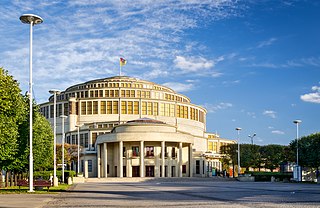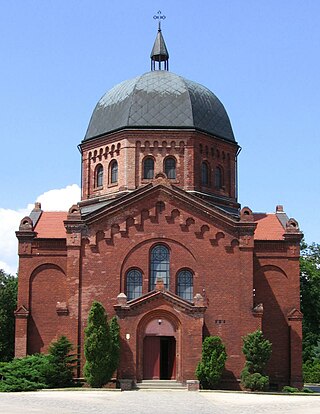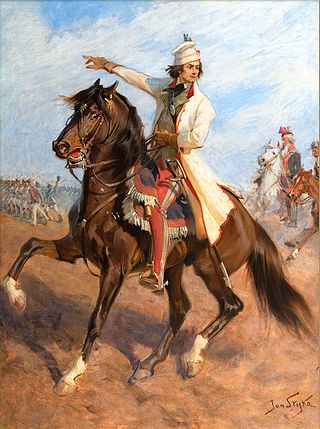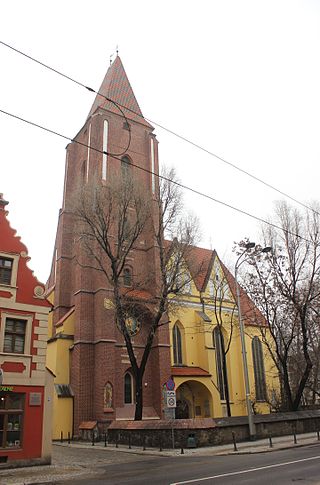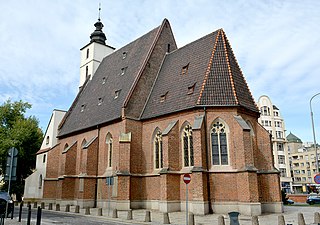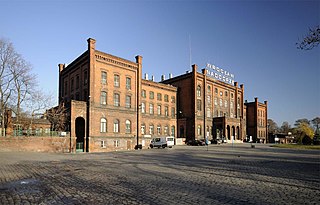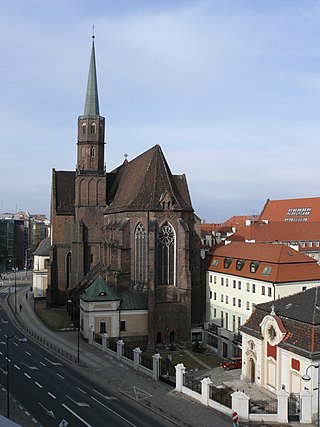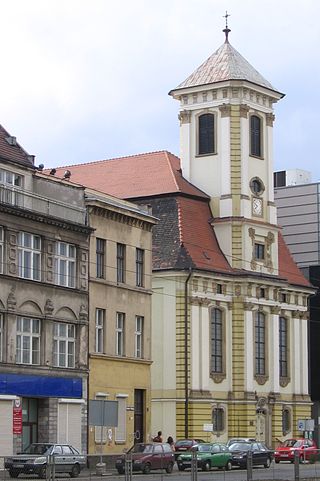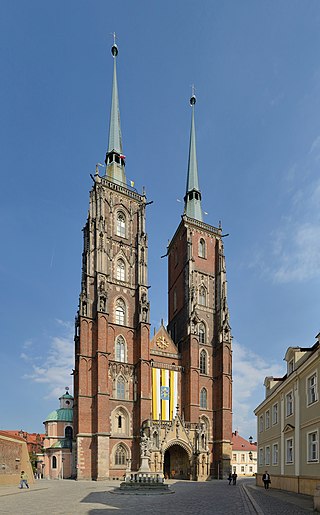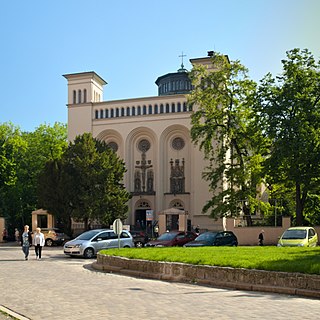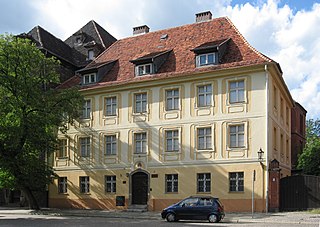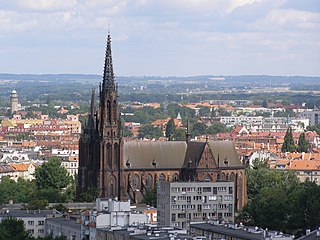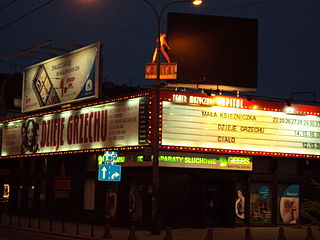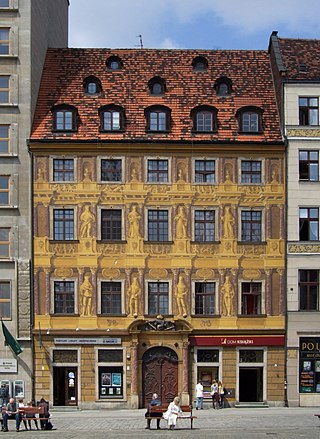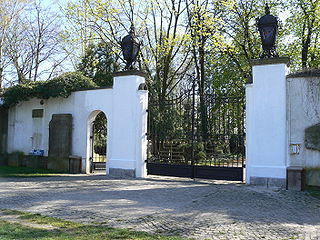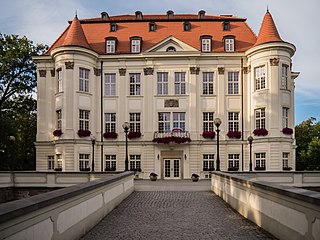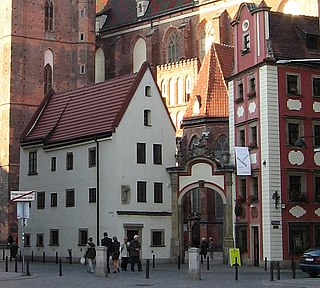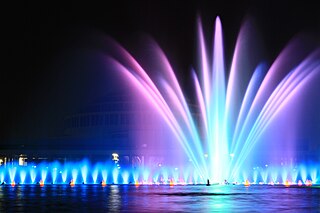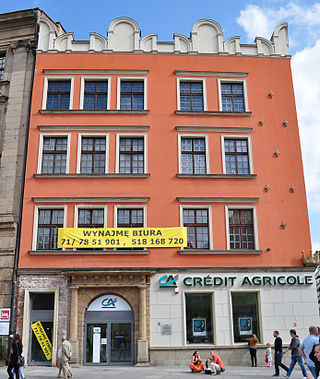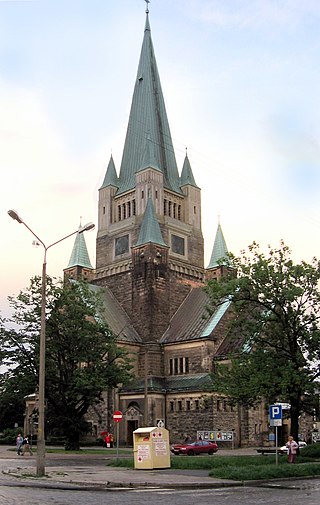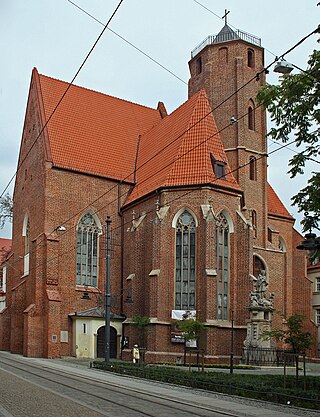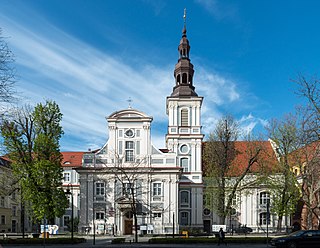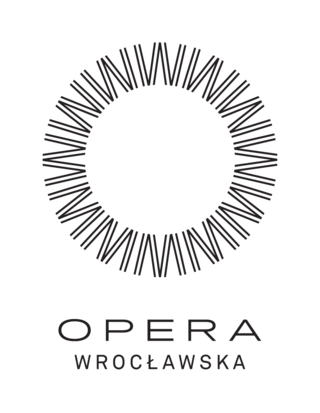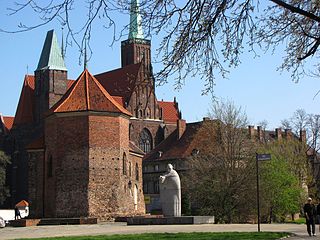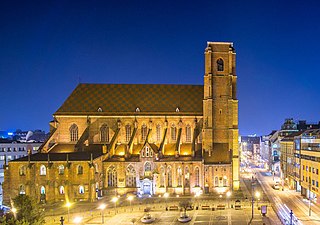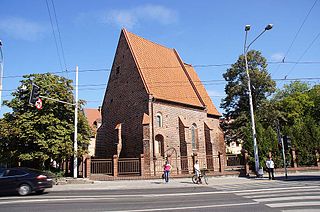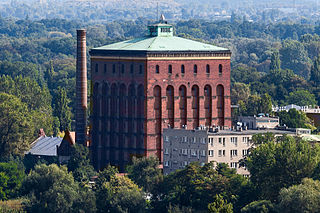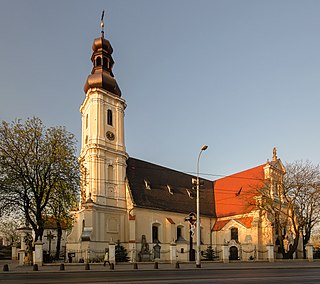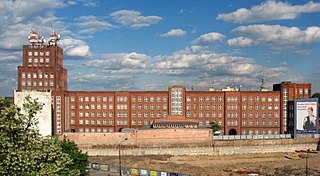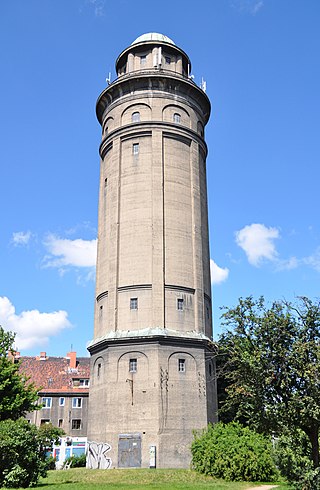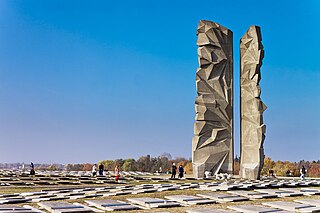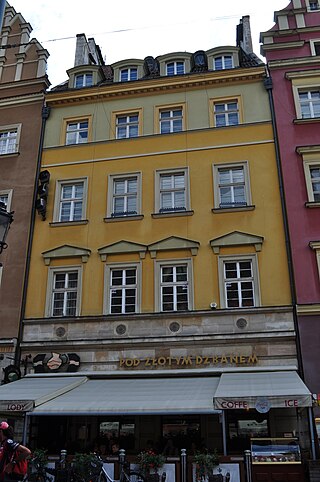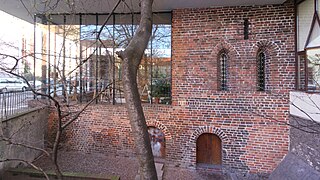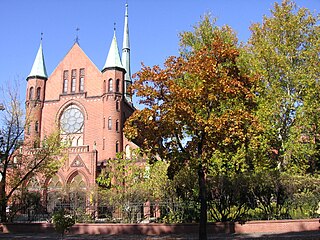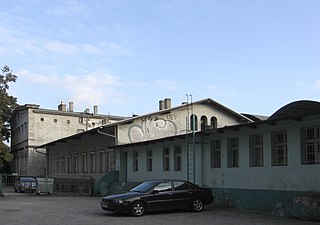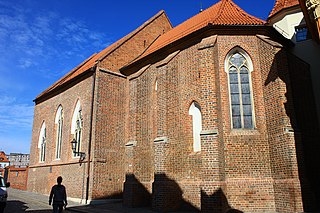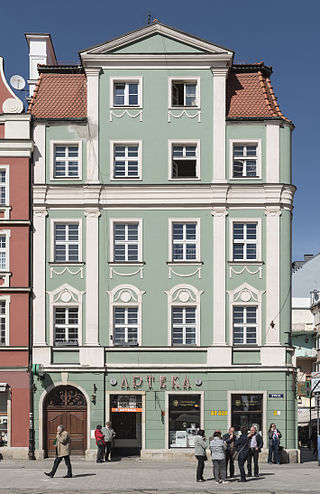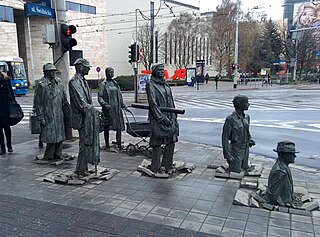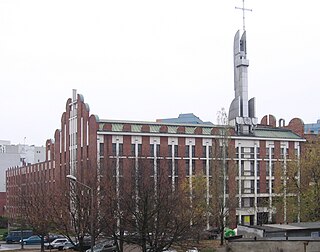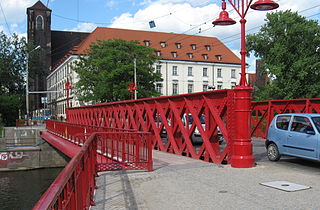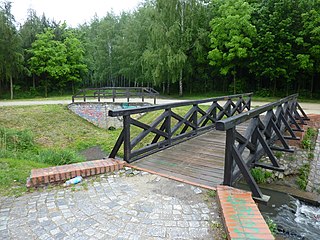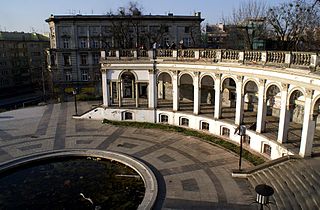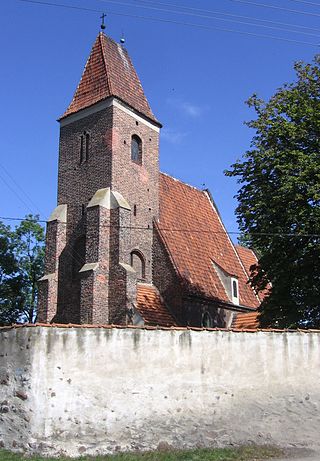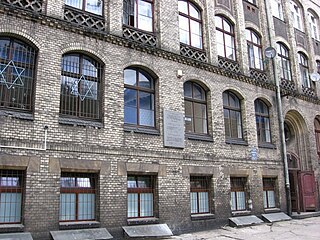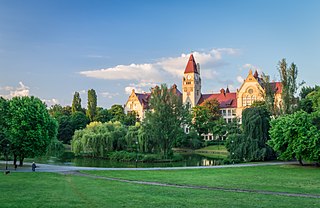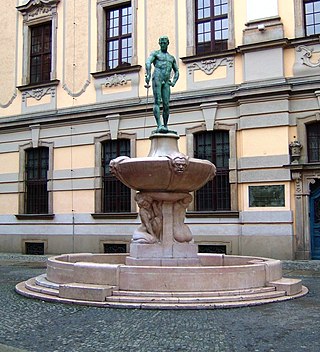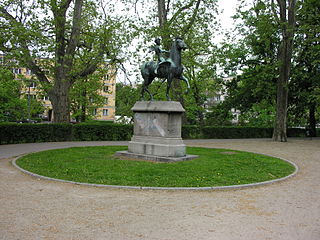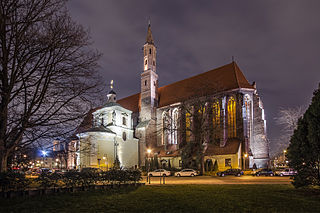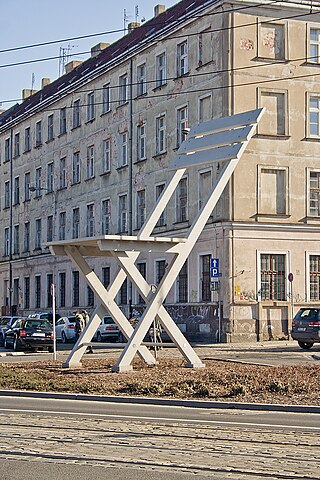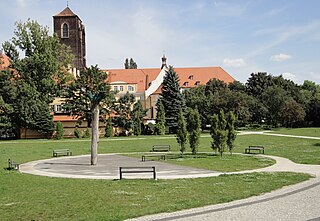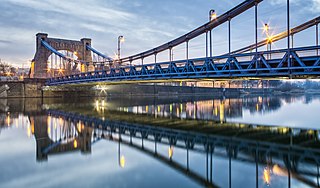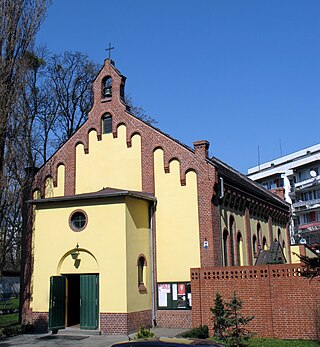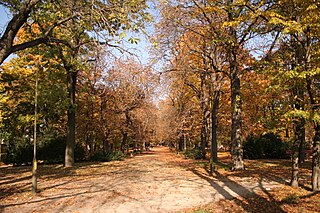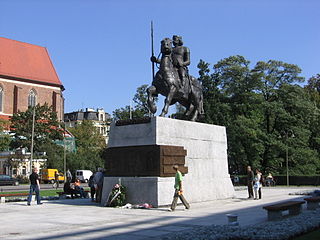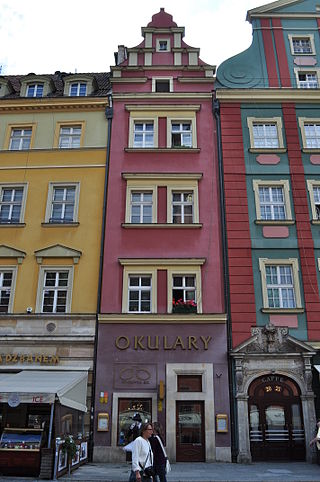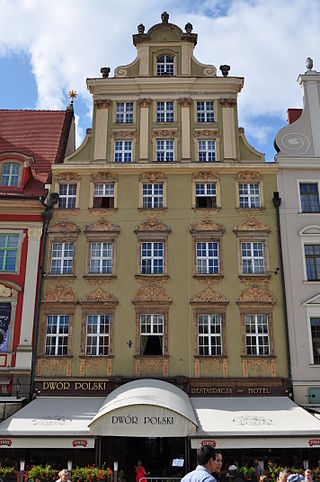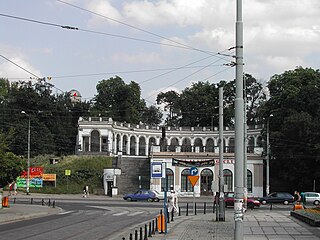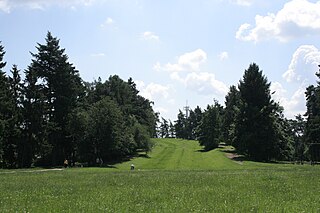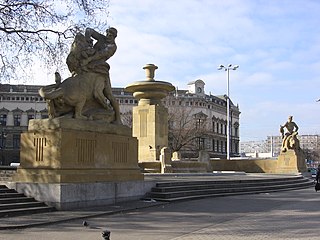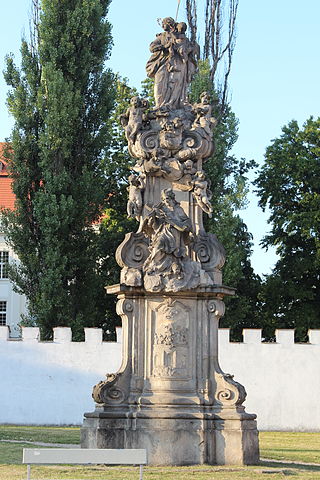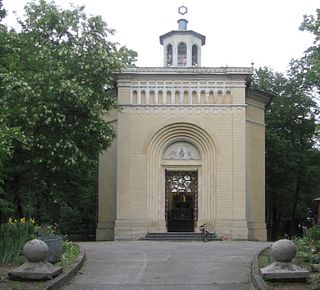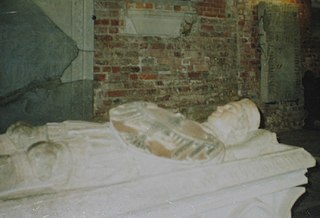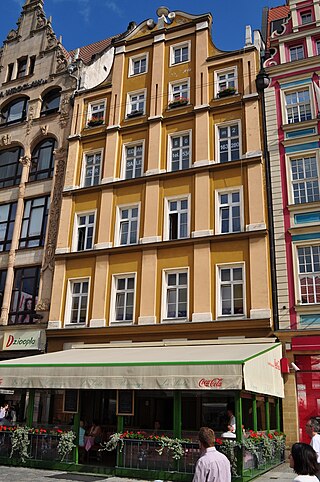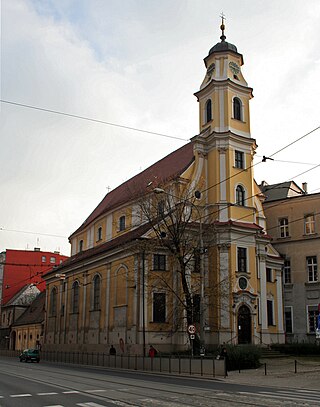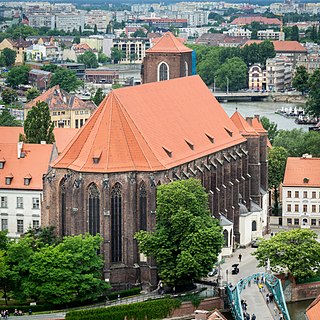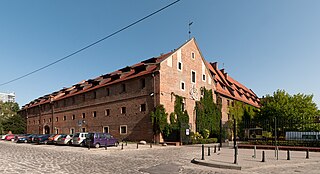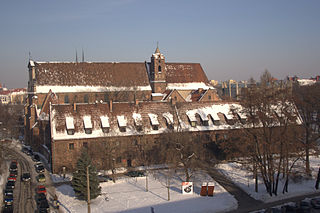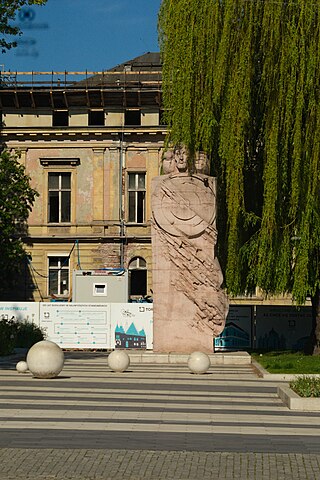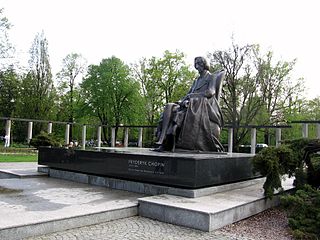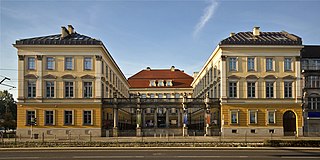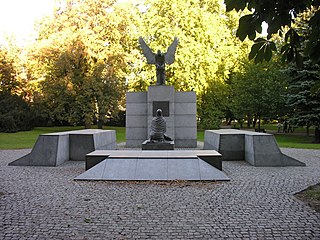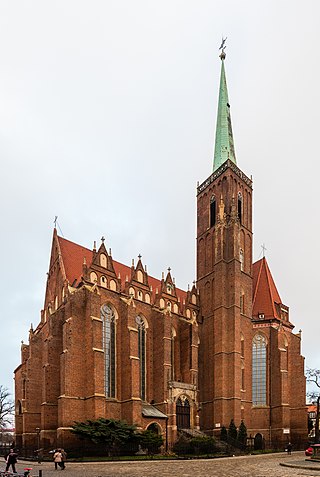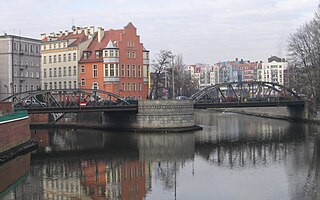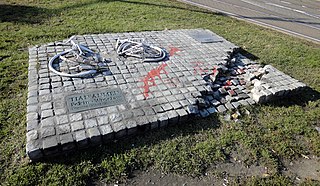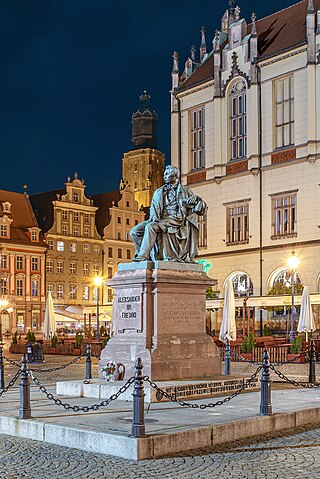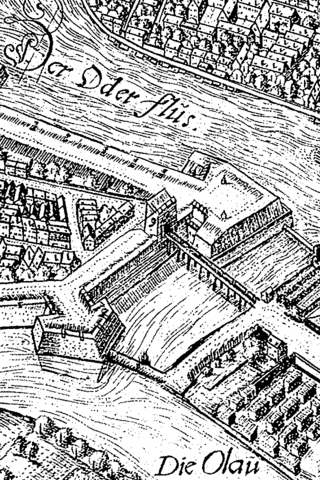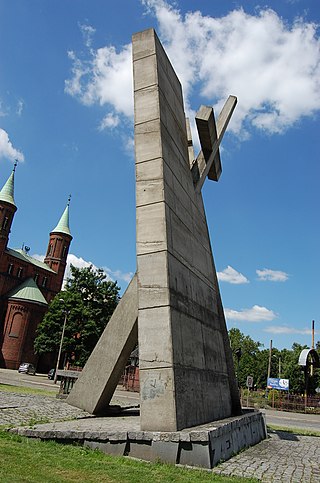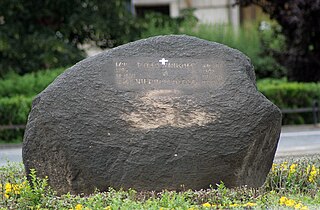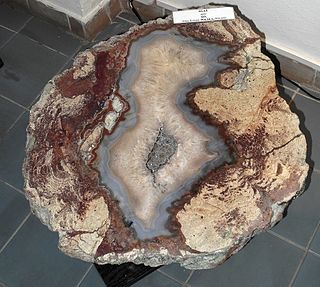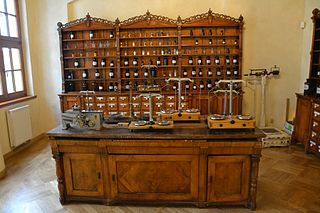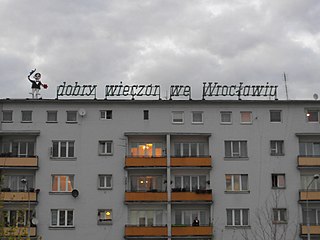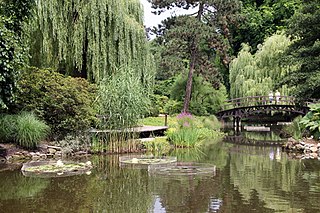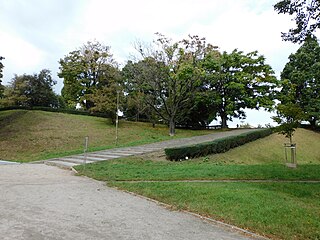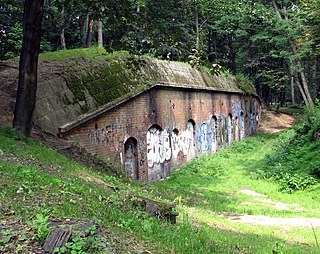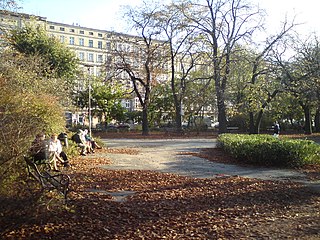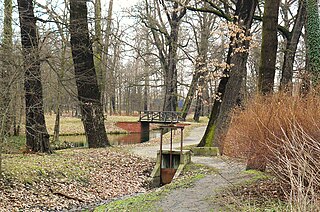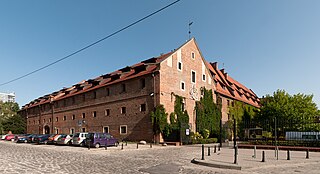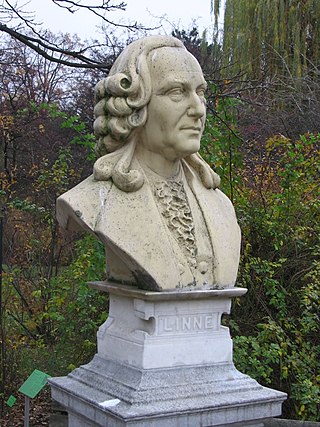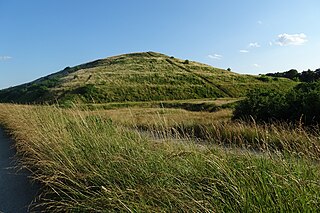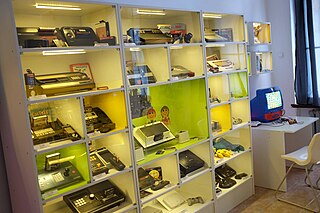100 Sights in Wrocław, Poland (with Map and Images)
Legend
Welcome to your journey through the most beautiful sights in Wrocław, Poland! Whether you want to discover the city's historical treasures or experience its modern highlights, you'll find everything your heart desires here. Be inspired by our selection and plan your unforgettable adventure in Wrocław. Dive into the diversity of this fascinating city and discover everything it has to offer.
Sightseeing Tours in Wrocław1. Centennial Hall
The Centennial Hall, formerly named Hala Ludowa, is a historic building in Wrocław, Poland. It was constructed according to the plans of architect Max Berg in 1911–1913. Max Berg designed Centennial Hall to serve as a multifunctional structure to host "exhibitions, concerts, theatrical and opera performances, and sporting events". The hall continues to be used for sporting events, business summits, and concerts.
Wikipedia: Centennial Hall (Wrocław) (EN), Url, Website, Website 2, Heritagewebsite
2. Cmentarz Grabiszyński
Grabiszyński Cemetery – next to the Osobowicki Cemetery, the Holy Family Cemetery, St. Lawrence Cemetery, one of the largest cemeteries in Wrocław. The cemetery within its current boundaries is one of the three parts constituting a larger cemetery complex in the first half of the twentieth century. Initially, it was a cemetery where the dead from the southern parishes of Wrocław, Evangelical: St. Elizabeth and Holy Trinity, Catholic: St. Charles Borromeo and St. Elizabeth of Hungary, and monks from the monastery of the Brothers Hospitallers were buried. Later it became a municipal cemetery – Kommunal Friedhof in Graebschen.
3. Panorama of the Battle of Racławice
The Racławice Panorama is a monumental cycloramic painting depicting the Battle of Racławice, during the Kościuszko Uprising. It is located in Wrocław, Poland. The painting is one of only a few preserved relics of a genre of 19th-century mass culture, and the oldest in Poland. The panorama stands in a circular fashion and, with the viewer in the center, presents different scenes at various viewing angles. A special kind of perspective used in the painting and additional effects create a feeling of reality.
4. Polish Orthodox Church
The Cathedral of the Nativity of the Most Holy Mother of God is an Orthodox cathedral in Wrocław, which is the main temple of the Diocese of Wrocław-Szczecin and the seat of the parish of the Nativity of the Most Holy Mother of God. The Cathedral is located at St. Nicholas Street, within the District of Four Denominations.
Wikipedia: Sobór Narodzenia Przenajświętszej Bogurodzicy we Wrocławiu (PL)
5. ZOO Wroclaw

The Wrocław Zoological Garden, known simply as the Wrocław Zoo, is a zoo on Wróblewski Street in Wrocław, Poland. It is the oldest zoo in Poland, having been first launched in 1865 as the Breslau Zoological Garden while the city was part of Prussia. During the World Wars it was first shut down, then reopened and finally destroyed. After World War II, it was rebuilt and ultimately opened in 1948 and now it is also the largest zoo in the country. The zoo covers 33 hectares near downtown Wrocław. It is home to about 10,500 animals representing about 1,132 species. In terms of the number of animal species it is the third largest zoological garden in the world.
6. Kościół Świętego Krzysztofa
St. Christopher's Church in Wrocław – the church of the Evangelical-Augsburg parish of St. Christopher in Wrocław, located at St. Christopher's Square located at the corner of Kazimierza Wielkiego and Wierzbowa Streets.
Wikipedia: Kościół św. Krzysztofa we Wrocławiu (PL), Website
7. Dworzec Wrocław Nadodrze
Wrocław Nadodrze – a railway station and the penultimate of all standard-gauge railway stations built in Wrocław, built in 1868 according to the design of Hermann Grapow, who is often confused with Wilhelm Grapow, the author of the Upper Silesian Railway station designed several years earlier, which in 1857 replaced the old Upper Silesian Railway Station and today is called Wrocław Główny. The station is located on the railway line No. 143 connecting Kalety and Wrocław Popowice, at Powstańców Wielkopolskich Square in the Nadodrze housing estate. It is an important station within the Lower Silesian Agglomeration Railway and in intra-city traffic.
8. Kościół Świętego Wojciecha
St. Adalbert's Church, German: Adalbertkirche, in Wrocław at Dominikański Square in the Old Town – one of the largest and oldest Gothic churches in the city. Double Sanctuary: Our Lady of Podkamień and Blessed Czesław.
9. Divine Providence Church
The Church of Divine Providence in Wrocław, formerly known as the court church, is an Evangelical church belonging to the parish of the Evangelical-Augsburg Divine Providence in Wrocław. It is located at Kazimierza Wielkiego Street, within the District of Four Denominations.
Wikipedia: Kościół Opatrzności Bożej we Wrocławiu (PL), Url 0
10. Archikatedra Świętego Jana Chrzciciela
The St. John the Baptist Archcathedral is the seat of the Archdiocese of Wrocław and a landmark of the city of Wrocław in Poland. The cathedral, located in the Cathedral Island, is a Gothic church with Neo-Gothic additions. The current standing cathedral is the fourth church to have been built on the site.
11. Kościół Opieki Świętego Józefa
The Church of the Protection of St. Joseph in Wrocław – a classicist-neo-Romanesque church designed by architect Carl Ferdinand Langhans, built in the years 1821–1823, located in Wrocław at 1 Ołbińska Street at the intersection with Jedności Narodowej Street.
12. Archdiocesan Museum
The Archdiocesan Museum in Wrocław – a museum founded in 1898 in Wrocław, one of the oldest archdiocesan museums in Poland; collects, m.in, a rich and rare collection of ancient and Gothic monuments, mainly from the times of the Piasts of Silesia.
Wikipedia: Muzeum Archidiecezjalne we Wrocławiu (PL), Website
13. Kościół pw. Świętego Michała Archanioła
The Church of St. Michael the Archangel in Wrocław-Ołbin – a neo-Gothic building located at the intersection of Bolesława Prusa and Wyszyńskiego streets in Wrocław, in the Ołbin housing estate.
14. Teatr Muzyczny Capitol
Capitol Musical Theatre – a musical theatre founded in Wrocław in 2004, which is a continuation of earlier theatres existing in the same place, such as: Lower Silesian Operetta, Musical Theatre, Wrocław Operetta and Musical Theatre – Wrocław Operetta
15. Kamienica Pod Siedmioma Elektorami
The Tenement House Under the Seven Electors – a Renaissance tenement house on the Market Square in Wrocław from the second half of the thirteenth century. It is characterized by rich decorations. The Habsburg eagle was placed in the tympanum. In the seventeenth century, the tenement house was called Köbersche Haus or Stellenfeldsche Haus.
Wikipedia: Kamienica Pod Siedmioma Elektorami we Wrocławiu (PL), Url, Url 0
16. Jewish Cemetery
The Old Jewish Cemetery is a historic necropolis-museum situated on 37/39 Ślężna Street, in the southern part of Wrocław, Poland. Opened in 1856, the cemetery's eclectic layout features many architectural forms and styles on a monumental scale.
17. Kościół Świętego Idziego
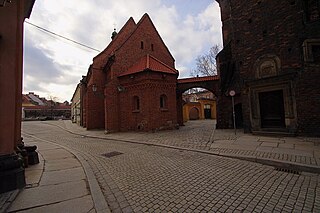
St. Giles' Church in Wrocław – a late-Romanesque church from the 1st half of the 13th century in Ostrów Tumski in Wrocław. It is the oldest fully preserved building in Wrocław, and at the same time the oldest church in the city that is still active today.
18. Zamek w Leśnicy
Castle in Leśnica – a former castle and princely residence in Leśnica, established in 1132 as a defensive stronghold, since then it has been destroyed and rebuilt many times. After the incorporation of the Duchy of Wrocław into the Kingdom of Bohemia, in the period 1339-1945 the castle became the residence of rich families of Wrocław burghers. During the hostilities of World War II, it was not destroyed. After the fire in 1953, it was rebuilt and rebuilt for the needs of the community center without preserving the interior design and furnishings. Currently, it houses the "Zamek" Cultural Center.
19. Dom altarystów Małgosia,
Hansel and Gretel – two historic medieval tenement houses at the north-west corner of the Wrocław Market Square, connected with each other by an arcade. Built most probably in the fifteenth century, they were then part of a larger group of altarist houses of the parish church of St. Elizabeth. Between the tenement houses, under the arcade, there was an entrance to the cemetery liquidated in the eighteenth century, which is reminded by the inscription in Latin. on the cartouche "Mors Ianua Vitae" –. There used to be a gate in this gate.
20. Wrocławska Fontanna
The Wrocław Multimedia Fountain is a multimedia musical fountain and ornamental pond in Wrocław, of western Poland. The fountain runs only during the summer season, from the last weekend of April or the first weekend of May to late October.
21. Kamienica Pod Złotą Koroną
Tenement House Under the Golden Crown – a tenement house on the Wrocław market square, on its eastern frontage, on the so-called side of Zielona Trzcina or Zielona Rura; It was one of the earliest works of the Silesian Renaissance.
Wikipedia: Kamienica Pod Złotą Koroną we Wrocławiu (PL), Url, Url 0
22. Kościół Świętego Augustyna
St. Augustine's Church – a post-evangelical Catholic church at Sudecka Street in Wrocław. Its patron is Augustine of Hippo; until 1945, this dedication was borne by another church in Wrocław's Borek, at Kleinburgstraße (Januszowicka Street), which was razed to the ground during the Red Army's attack on Festung Breslau at the end of World War II.
23. Kościół pw. Świętego Macieja
Church of St. Matthias the Apostle in Wrocław – a Gothic brick church, built on a cruciform plan, single-nave with a transept and a tower. It is located on the eastern side of Szewska Street, with the address of 17a Bishop Nankiera Square. The history of the church dates back to the first quarter of the thirteenth century. It was then built as a court chapel associated with the court (curia) of Henry the Bearded, which was located further east. This church consisted of a two-bay nave and also a two-bay, narrower and longer chancel.
24. Kościół pw. Świętej Klary i Świętej Jadwigi
Church of St. Hedwig in Wrocław – a Roman Catholic temple, which, together with the former convent of the nunnery of St. Clare, today belongs to the Ursuline Sisters of the Roman Union, running a Public High School here.
Wikipedia: Kościół św. Klary i św. Jadwigi we Wrocławiu (PL)
25. Opera Wrocławska
The Wrocław Opera is an opera company and opera house in the Old Town of Wrocław, Poland. The opera house was opened in 1841 and up to 1945 was named after the city's then German name, Oper Breslau.
26. ruiny prawobrzeżnego zamku Piastów Śląskich
The Castle on Ostrów Tumski in Wrocław – the former residence of the Wrocław castellans, and later the Piast district princes on the western edge of Ostrów Tumski. From the brick castle from the 12th and 13th centuries, which was built in the place of a hillfort existing since the 10th century, only the heavily distorted church of St. Martin and a few fragments within other buildings or under ground level have survived. The former castle occupied the area on both sides of the present-day St. Martin's Street between the Oder River, Świętokrzyska Street and the buildings of St. Martin's Street 10 and 12.
27. Katedra Świętej Marii Magdaleny
Cathedral of St. Mary Magdalene in Wrocław, Poland, is a gothic church located between Szewska and Laciarska street close to the central market square, established in the 13th century. It serves as a cathedral of the Polish Catholic Church led by Piotr Mikołajczak. Along with the Old Town of Wrocław, it is listed as a Historic Monument of Poland.
28. Kościół Świętego Łazarza
Church of St. Lazarus in Wrocław – a Gothic brick church built by the Order of the Knights and Hospitallers of St. Lazarus of Jerusalem in the second half of the fourteenth century by the road leading from medieval Wrocław to the south-east – to Oława.
29. Water Tower Na Grobli
The water tower at Na Grobli Street – a water tower with a total height of 40 m, located in Wrocław, which is one of the oldest technical infrastructure facilities of the city. The tower was built as a key element of John Moore's project to supply 200,000 inhabitants with water, corrected and dressed in a historicizing robe by the city's construction counsellor Johann Christian Zimmermann.
30. Kościół pw. Świętego Maurycego
St. Maurice's Church at 36 Gen. Romualda Traugutta Street in Wrocław – originally a Gothic single-nave church with a fifteenth-century baptismal chapel and a tower rebuilt in the 18th century in the Baroque style according to the design of architect J. Peintner.
31. Muzeum Pana Tadeusza
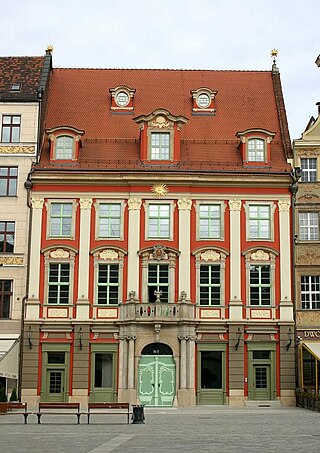
Pan Tadeusz Museum – part of the Ossolineum, presenting the Museum's collections against a rich historical and literary background. It has been operating since May 2016 in the tenement house Under the Golden Sun in Wrocław.
32. Muzeum Poczty i Telekomunikacji
Museum of Post and Telecommunications in Wrocław – the only museum in Poland, next to the Polish Post Museum in Gdańsk, gathering exhibits documenting the history of post, telecommunications and telegraphy in Poland. It is located in Wrocław, in the historic building of the Main Post Office at 1 Zygmunta Krasińskiego Street. Since 1988, it has been a member of ICOM and IATM.
Wikipedia: Muzeum Poczty i Telekomunikacji we Wrocławiu (PL), Website
33. dawna wieża ciśnień
The water tower in Karłowice – a water tower located at Daniłowski Square in Wrocław with the nominal address of 75 Berenta Street, formerly supplying the local water supply system of the Karłowice housing estate.
34. Cmentarz Żołnierzy Polskich
The Polish Soldiers Cemetery in Wrocław – a war necropolis created in the years 1968–1970 and expanded in the years 1972–1979 as a resting place for 604 people, mainly Polish soldiers – participants of the September Campaign who died in German captivity and soldiers of the 2nd Polish Army who died at the front, as well as soldiers of the underground struggle and forced civilian laborers and victims of Nazi terror.
Wikipedia: Cmentarz Żołnierzy Polskich we Wrocławiu (PL), Url
35. Kamienica Pod Złotym Dzbanem
The Golden Pitcher House – a medieval tenement house in the southern frontage of the market square in Wrocław, number 22, opposite the entrance to the Świdnicka Cellar and next to the Green Pumpkin House.
36. Domek Romański
Romanesque House in Wrocław, or House of the Ladies of Trzebnica in Wrocław, is a Romanesque villa at Plac Biskupa Nankiera in Wrocław. More precisely, it is an early-Gothic building with Romanesque elements that dates back to the beginning of the 13th century, partly reconstructed after World War II. It was the centre for the Cistercians of Trzebnica, which is why it was called the House of the Ladies of Trzebnica. Nearby, along the Kotlarska Street, were the Nowe Jatki, a medieval shopping center belonging to the monastery.
37. Kościół pw. Świętego Antoniego
St. Anthony's Church in Wrocław in Karłowice – a Roman Catholic temple built in the neo-Gothic style according to the design of architect Ludwig Schneider in the years 1900-1901, serving the parish of the same name.
Wikipedia: Kościół św. Antoniego we Wrocławiu-Karłowicach (PL)
38. The National Forum of Music
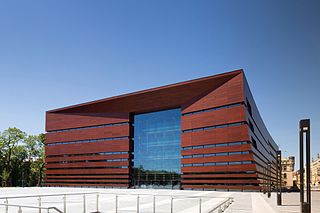
The National Forum of Music or NFM is a music venue located in Wrocław, Poland. It was completed in 2015 and houses a large concert hall with 1800 seats and three chamber halls and is home to many major ensembles and festivals in Wrocław. The building was designed by APA Kuryłowicz & Associates. It is one of the largest and most modern music venues in Poland.
39. dawny dworzec Wrocław Górnośląski
Wrocław Górnośląski – a closed railway station and station of the Upper Silesian Railway, located at 13 Stanisława Małachowskiego Street in the Przedmieście Świdnickie housing estate in Wrocław.
40. Kościół Świętych Piotra i Pawła
Church of St. Peter and St. Paul – a church in the south-western part of Ostrów Tumski in Wrocław, next to the Tumski Bridge. The 14-metre-wide building is orientated, set sideways (24 m long) to Katedralna Street, and the wall of its presbytery is partly adjacent to the orphanage (Orphanotrophaeum) for noble children, erected later (1702–15), later transformed into a dormitory (currently it houses, among m.in, the Specialist Family Counselling Centre and the Adoption and Care Centre of the Metropolitan Curia, the Metropolitan Organist Study and the Wrocław station of Radio Rodzina; there was also a Academic Pastoral Ministry "under the Four".
Wikipedia: Kościół św. Piotra i św. Pawła we Wrocławiu (PL), Url, Url 0
41. kamienica Pod Złotą Trójcą
The Golden Trinity House or the Holy Trinity House, also known as the Double Golden Eagle Pharmacy – a tenement house on the Wrocław market square, on its northern frontage called the Sweets Market.
Wikipedia: Kamienica Pod Złotą Trójcą Świętą we Wrocławiu (PL), Url, Url 0
42. Monument to the Anonymous Pedestrians
The Monument of the Anonymous Passer-by – a monument in Wrocław, unveiled on the night of 12 to 13 December 2005, consisting of fourteen life-size bronze human figures, standing on both sides of Świdnicka Street in the place where it intersects with Piłsudskiego Street.
43. Kościół pw. Świętego Ignacego Loyoli
The Church of St. Ignatius of Loyola at Stysia Street in Wrocław's Krzyki district – a Catholic church built together with the accompanying Jesuit monastery in the years 1979–1990 according to the design of architect Zenon Nasterski.
Wikipedia: Kościół św. Ignacego Loyoli we Wrocławiu (PL), Website
44. Sand Bridge
The Sand Bridge – an iron bridge erected in 1861 in Wrocław, over the southern branch of the Oder River, entered into the register of immovable monuments of the Lower Silesian Voivodeship. It is the initial part of the route leading from the medieval city to the north. It is part of the oldest Wrocław crossing over the Oder, the northern section of which is made up of the Mill Bridges. The bridge is relatively narrow, on the less than six-and-a-half-meter roadway there are two opposite lanes of vehicular traffic and a two-way tram line. The sidewalks are located on the outer side of the bridge girders.
45. Park Tysiąclecia
Millennium Park – a city park located in the western part of Wrocław, the creation of which began in 2000. It is the eastern part of the larger complex – Nowodworski Park, which has not been fully implemented. The area of the Millennium Park is about 90 ha. It is located on the left (western) bank of the Ślęza River, which at the same time forms its eastern border. From the west, it is limited by the Wrocław Motorway Bypass. The southern border of the Millennium Park is Graniczna Street, behind which the Muchobór Wielki housing estate is located, and the northern border is Żernicka Street.
46. Wzgórze Partyzantów
Partisan Hill – the name of the remains of the former Sackron Bastion in the system of urban fortifications of the city of Wrocław, in force in the years 1948-2024, in its place, after the demolition of the walls on the order of the French occupiers in 1807, the recreational Sack Hill was first built, which after the construction of a belvedere and a tower on it in 1867 was renamed Liebichs Höhe. On the south-western slope of the Hill, in 1932, a Colonial Monument was erected – designed by Walter Hierse and Maximilian Schmergalski – dedicated to soldiers killed in the German colonies: East Africa, South-West Africa, Togo, China and the islands of Oceania. In 1945, the monument was demolished, and the Liebich Hill was first renamed the "Hill of Love", and in 1948 the "Hill of the Partisans"; the height of 132 m above sea level, the 10th highest hill in Wrocław.
47. Kościół pw. Świętej Jadwigi
St. Hedwig's Church in Jerzmanów in Wrocław – a fourteenth-century Catholic church, located at today's Jerzmanowska Street No. 87, near another church built in 1880 under the invocation of Our Lady Queen of Poland.
Wikipedia: Kościół św. Jadwigi we Wrocławiu-Jerzmanowie (PL)
48. Mała Synagoga
The Small Synagogue in Wrocław, shul – a synagogue located in Wrocław, at 9 Pawła Włodkowica Street, right next to the White Stork Synagogue. It is currently one of the two active synagogues in this city.
49. Park Stanisława Tołpy
Stanisław Tołpa Park – a city park located in Wrocław, in the area of the following streets: Nowowiejska, Cardinala Stefana Wyszyńskiego and Bolesława Prusa. The name of the park, commemorating Stanisław Tołpa, was given in 2005.
50. Fencer
The Fencer Fountain is a fountain in Wrocław located on the square in front of the University of Wrocław and one of its symbols. It was designed by Hugo Lederer (1871–1940), a professor at the Berlin Academy of Fine Arts, and was placed on University Square on 26 November 1904.
51. Ogród Staromiejski
Nicolaus Copernicus Park – a city park located in Wrocław, in the area of the so-called Old Town Promenade, on the inner side of the City Moat. The current name of the park is valid on the basis of the Resolution of the City Council of Wrocław of 9 October 1993 (No. LXXI/454/93) on the names of parks and forest areas existing in Wrocław. From the east, the park is limited by Wierzbowa Street and the building of the former Leipziger Palace. Behind them is the square where the statue of Nicolaus Copernicus is located. The northern border of the park is marked by Teatralna Street and the building of the former municipal bathhouse standing behind it. From the west, the park is limited by Teatralny Square and Corpus Christi Street. In their immediate vicinity there is the building of the Wrocław Puppet Theatre. A little further, at Świdnicka Street, there is a monument to Bolesław Chrobry. The inspiration for the establishment of the park in this place were the nineteenth-century Tivoli Gardens in Copenhagen.
52. Kościół pw. Świętego Wincentego i Świętego Jakuba
The Cathedral of St. Vincent and St. James is a Gothic cathedral located in the Old Town of Wrocław, Poland, seat of the Ukrainian Catholic Eparchy of Wrocław. It is one the burial sites of Polish monarchs.
Wikipedia: St. Vincent and St. James Cathedral, Wrocław (EN), Website
53. Krzesło
Chair – an outdoor sculpture by Tadeusz Kantor standing at the intersection of Rzeźnicza Street and Nowy Świat Street in Wrocław. The sculpture was one of the projects for the urban space prepared on the occasion of the Wrocław '70 Visual Arts Symposium. Another sculpture, created in Wrocław according to the designs from the Symposium, is the Arena made according to the design of Jerzy Bereś.
54. Żywy pomnik Arena
A lively monument Arena - an outdoor sculpture by Jerzy Beresia located on the island of Piasek in Wrocław. The sculpture was one of the projects intended for urban space prepared on the occasion of the Wrocław '70 art symposium. Another sculpture, realized in Wrocław according to projects from the symposium, is a chair made according to the design of Tadeusz Kantor.
55. most Grunwaldzki
Grunwald Bridge is a suspension bridge over the river Oder in Wrocław, Poland, built between 1908 and 1910. Initially the bridge was called the Imperial Bridge (Kaiserbrücke), then the Bridge of Freedom (Freiheitsbrücke). The architectural design of the bridge was by a city councilor, Richard Plüddemann. The bridge opened on 10 October 1910 in the presence of Emperor Wilhelm II.
56. Most Tumski
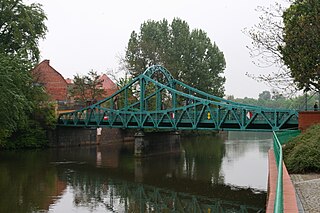
The Tumski Bridge, lit. 'Cathedral Bridge', is a steel bridge over the northern branch of the Oder in Wrocław. Constructed in 1889, it replaced an old wooden bridge to connect the Cathedral Island with the Sand Island. The bridge is open to pedestrians only.
57. Kościół pw. Świętego Jerzego
St. George's Church in Wrocław – a Catholic church in the Popowice housing estate built in 1905. Formerly the parish church of the parish of the same name, and now a filial church of the parish of the Blessed Virgin Mary Queen of Peace.
58. Park Generała Władysława Andersa
General Władysław Anders Park – a city park located in Wrocław, in the area of the following streets: Kamienna, Borowska, Ślężna and Wieczyzna. Its current name is in force on the basis of the Resolution of the City Council of Wrocław of 9 October 1993 (No. LXXI/454/93) on the names of parks and forest areas existing in Wrocław. There are, m.in, two playgrounds in the park. The network of alleys in the park resembles the layout found in cemeteries.
Wikipedia: Park Generała Władysława Andersa we Wrocławiu (PL)
59. Bolesław Chrobry
The Monument of Bolesław the Brave in Wrocław – an equestrian monument of Bolesław the Brave according to the design of Dorota Korzeniewska, Maciej Albrzykowski and Grażyna Jaskierska-Albrzykowska, erected in Wrocław at Świdnicka Street and unveiled on 15 September 2007.
Wikipedia: Pomnik Bolesława Chrobrego we Wrocławiu (PL), Url
60. Kamienica Dom Bankierów
Tenement House at 21 Market Square – a tenement house on the Market Square in Wrocław, on the southern frontage of the Market Square, the so-called side of the Golden Cup, also known as the Bankers' House, and one of the narrowest tenement houses in Wrocław.
61. Kamienica Dwór Polski
Tenement House at Rynek 5 – a tenement house on the Wrocław market square in the Gothic-Renaissance style with late Baroque elements, known as the "Polish Manor" tenement house after the restaurant located there.
Wikipedia: Kamienica przy Rynku 5 we Wrocławiu (PL), Url, Url 0
62. Bastion Sakwowy
The Sack Bastion – a fragment of the former fortifications of the city of Wrocław, in their south-eastern corner. In the years 1948–2024, the hill was called the Partisan Hill. However, this was an unofficial name and in 2024 it was officially changed to the Sack Bastion.
63. Mała Sobótka
Mała Sobótka – an artificially created hill in the Grabiszynek housing estate in Wrocław, with an absolute height of 136 m above sea level. It is also often called "Górka Skarbowców" by the inhabitants of the city due to the street of this name running nearby.
64. Fontanna Alegoria Walki i Zwycięstwa
The Allegory of Struggle and Victory Fountain – a fountain and sculptures (monuments) of Struggle and Victory located in Wrocław at John Paul II Square in the Old Town Promenade running along the city moat.
65. Figura Matki Boskiej z Dzieciątkiem i Świętego Jana Nepomucena
Statue of the Virgin Mary with Child and St. John of Nepomuk – an eighteenth-century sculpture in the Baroque style depicting Mary with Child and scenes from the life of St. John of Nepomuk and his figure with a crucifix. It is located on Świętojański Square in front of the castle in Leśnica. It is one of the few monuments of Leśnica, a housing estate in Wrocław.
Wikipedia: Figura Matki Boskiej z Dzieciątkiem i św. Jana Nepomucena we Wrocławiu (PL), Url
66. Wzgórze Kapliczne
The Chapel Hill, also known as the Holy Hill – a small hill about 120 m above sea level, artificially built in the Osobowice housing estate in Wrocław, on the outskirts of the Osobowice Forest. It is a place of worship of the miraculous statue of Our Lady of Osobowice.
67. Mauzoleum Piastów Śląskich
The Mausoleum of the Silesian Piasts in Wrocław is located in the church of St. Clare and St. Hedwig at Nankiera Square, in the Catholic school of the Ursuline Sisters of the Roman Union, in the former main nave of the church.
Wikipedia: Mauzoleum Piastów Śląskich we Wrocławiu (PL), Url
68. Kamienica Pod Złotą Kotwicą
The tenement house at Rynek 38, also known as the Tenement House Under the Golden Anchor – a tenement house on the Wrocław market square, on its eastern frontage, on the so-called side of the Green Reed or Green Pipe. On the Wrocław Market Square, two tenement houses have the same name: the second one is located at the plot at Rynek 52.
69. Kościół pw. Świętej Trójcy
The Church of the Holy Trinity of the Brothers Hospitallers in Wrocław – a historic Catholic church in Wrocław, located in Przedmieście Oławskie, at Gen. Romualda Traugutta Street, is a monastery church of the Order of the Brothers Hospitallers.
70. Kościół Najświętszej Marii Panny na Piasku
The Church of St. Mary on the Sand is a Catholic church in Wrocław, in Silesia, located on the Sand Island, in the Oder River, in the heart of the city. Founded in the 12th century, it is one of the oldest Gothic churches in the country.
71. Muzeum Archeologiczne
The Archaeological Museum in Wrocław is one of the seven branches of the City Museum of Wrocław. Together with the Military Museum, it is located in the complex of buildings of the medieval Municipal Arsenal. In the past, the museum had other locations, m.in. at the end of the twentieth century, it was located in the Royal Palace. He specializes in the archaeology of Silesia. The mission of the Archaeological Museum is to acquire, develop and make available archaeological artefacts from Silesia. It is one of the oldest institutions of this type in Europe.
72. Park Juliusza Słowackiego
Juliusz Słowacki Park in Wrocław is a park located in the area of the Old Town – near the so-called New Town. It is also partly located in the place of a buried section of the city moat, a fragment of which for some time was the estuary section of the Oława River. The park covers an area of 5.74 ha.
73. Mikołaj Kopernik
The Monument of Nicolaus Copernicus in Wrocław – a monument commemorating the person of Nicolaus Copernicus. Its author was Professor Leon Podsiadły, and his work is considered one of the most important examples of contemporary sculptures. It was unveiled in 1974 on the occasion of the Copernican year, celebrated a year earlier on the occasion of the 500th anniversary of his birth. The initiators of the construction of the monument were the Society of Wrocław Lovers together with the Society of Astronomy Enthusiasts. The statue is made of artificial stone. It has the form of a body, a silhouette, with a stylized heliocentric system topped with a bust of the astronomer. In 1977, a plaque was installed with the inscription: Wrocławians to Nicolaus Copernicus 1473-1543.
74. Fryderyk Chopin
The Monument to Fryderyk Chopin in Wrocław is a monument located in Wrocław in the Southern Park, erected to commemorate the stays and performances of Fryderyk Chopin in Wrocław. The author of the sculpture is Jan Kucz. The monument was unveiled on September 5, 2004.
Wikipedia: Pomnik Fryderyka Chopina w Parku Południowym we Wrocławiu (PL)
75. Wzgórze Andersa
Anders Hill - an artificial hill created in the Huby housing estate in Wrocław with an absolute height of 138.14 m above sea level. The area of the Anders Hill is limited by four streets - Kamienna Street from the south, Ślężna Street from the west, Marek Petrusewicza Street from the north and Borowska Street from the east, where the hill is located used to be Sobótkowska Street. The hill has the shape of a flat mound formed of five layers decreasing upwards, the highest point is in the south-western part.
76. Muzeum Historyczne i Muzeum Sztuki Medalierskiej
The Historical Museum is one of the seven branches of the City Museum of Wrocław. Together with the Museum of Medallic Art, it is located in the former Royal Palace (Spätgenów) in Wrocław at Kazimierza Wielkiego Street.
77. Pomnik Ofiar Zbrodni Katyńskiej
The Monument to the Victims of the Katyn Massacre in Wrocław – a monument commemorating the victims of the Katyn massacre. The author of the monument's design is Tadeusz Tchórzewski. Built in the years 1994–2000. The monument is located in Juliusz Słowacki Park, near Purkyniego Street, about 250 meters southwest of the main entrance to the National Museum in Wrocław.
Wikipedia: Pomnik Ofiar Zbrodni Katyńskiej we Wrocławiu (PL)
78. Wrocław Market Hall
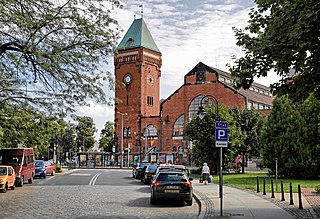
Wrocław Market Hall is a food hall in central Wrocław, Poland. Designed by Richard Plüddemann, it was built between 1906 and 1908 as the Breslauer Markthalle Nr 1, when the city was part of German Empire. The Hall was renowned for its then-innovative application of reinforced concrete trusses, which was unique in Europe at the time.
79. Kolegiata Świętego Krzyża i Świętego Bartłomieja
Collegiate Church of the Holy Cross and St. Bartholomew in Wrocław, Poland, is a two-storey brick Gothic collegiate church on the Ostrów Tumski, considered the second most important Roman Catholic church in Wrocław. It is one of the historic burial sites of Polish monarchs.
Wikipedia: Collegiate Church of the Holy Cross and St. Bartholomew, Wrocław (EN), Url, Url 0
80. Most Młyński Południowy
The Mill Bridges in Wrocław – a complex of two bridges over the branches of the Northern Oder. Bridges connect Sand Island with Mill Island and Mill Island with the right bank of the river. Before 1945, they were collectively called Gneisenau Brücke.
81. Pomnik ku czci Chińczyków z Tian’anmen
The Monument in Memory of Chinese from Tiananmen, also known as the Monument of the Victims of the Tiananmen Square Pacification, is a monument in Wrocław, Poland at Oławska Street. It commemorates the 1989 Tiananmen Square protests in Beijing and the victims of following massacre in which People's Liberation Army troops armed with assault rifles and accompanied by tanks fired at the demonstrators and those trying to block the military's advance into Tiananmen Square. The monument was first created by Igor Wójcik, Robert Jezierski and Joanna Czarnecka in 1989 and was later recreated by Marek Stanielewicz after the original monument was destroyed by the Security Service.
Wikipedia: Monument in Memory of Chinese from Tiananmen (EN)
82. Aleksander hrabia Fredro
The Aleksander Fredro Monument is a bronze statue located in Wrocław, Poland dedicated to Polish Romantic-era poet, playwright and author Aleksander Fredro. Originally built in Lwów in 1897 according to Leonard Marconi's design, the monument was transferred to Wrocław in 1956.
83. Bastion Ceglarski
The Brick Bastion – a fragment of the fortifications of Wrocław, built in 1585 in the north-eastern part of the belt of external walls surrounding the Wrocław New Town. Demolished along with the walls at the beginning of the nineteenth century.
84. Zesłańcom Sybiru
Monument to the Siberian Deportees in Wrocław — a monument designed by the sculptor Jarosław Perszko in close artistic cooperation with the engineer and architect Czesław Bielecki, erected in Wrocław on the Sybiraków Square next to Strzelecki Square. The silhouette of the monument, 12 meters high, depicts the Latin Cross piercing the wall.
85. Bojownikom o wyzwolenie narodowe i społeczne
Commemorative stone in honour of the Fighters for National and Social Liberation – a granite erratic boulder located on Tadeusz Kościuszko Square in Wrocław, dedicated to the memory of the fighters for national and social liberation. It was unveiled on 24 March 1946, on the occasion of the First Congress of Participants in the Armed Struggle for Independence and Democracy, which took place as part of the Kościuszko Year, celebrated in 1946. There are opinions that it was a propaganda attempt to include the Recovered Territories in the tradition of the Polish military action.
Wikipedia: Kamień pamiątkowy ku czci Bojowników o Wyzwolenie Narodowe i Społeczne (PL)
86. Muzeum Mineralogiczne
The Kazimierz Maślankiewicz Mineralogical Museum in Wrocław is a unit of the Institute of Geological Sciences of the University of Wrocław, at 30 Cybulskiego Street, with a branch at 22 Kuźnicza Street.
Wikipedia: Muzeum Mineralogiczne im. Kazimierza Maślankiewicza we Wrocławiu (PL), Website
87. Muzeum Farmacji Uniwersytetu Medycznego
The Museum of Pharmacy of the Faculty of Pharmacy of the Medical University of Wrocław – a pharmacy museum established in November 2011, located in Wrocław at the Chicken Market in the thirteenth-century Tenement House Under the Golden Eagle in Wrocław, now known as the House of the Silesian Pharmacist.
Wikipedia: Muzeum Farmacji Uniwersytetu Medycznego we Wrocławiu (PL)
88. Pomnik Pomarańczowej Alternatywy
The Orange Alternative Monument is a bronze monument unveiled in Wrocław in 2001 to commemorate the Orange Alternative movement, which operated in the city during martial law. The author of the monument is Olaf Brzeski.
89. Dobry wieczór we Wrocławiu
Good evening in Wrocław – a neon sign located on the roof of a block of flats at 106–114 Piłsudskiego Street in Wrocław. The neon sign is made in the form of a two-and-a-half-metre-tall human figure with a flower in one hand and a tilting hat in the other, as well as the inscription "good evening in Wrocław" on the right.
90. Botanical Garden
The Botanical Garden of the University of Wrocław is a botanical garden in Wrocław founded in 1811 in the area of Ostrów Tumski. The garden was established for medical students at the local university. During the Napoleonic Wars, the garden was damaged after the city fortifications were destroyed. Part of the garden featured a branch off the Odra river and was filled in during the conflict, but has since been restored as a large lily pond. It is the second oldest garden of this type in Poland, after the garden in Kraków. In 1974 it was listed as a protected monument in Lower Silesia, since 1994 it was included in the protected historical city center.
Wikipedia: University of Wrocław Botanical Garden (EN), Website, Url
91. Pogodynka
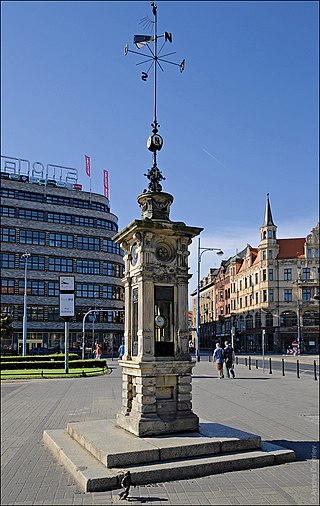
Pogoda – a meteorological column in Wrocław at Świdnicka Street, on its eastern side, at its intersection with the Old Town Promenade, near the building of the former Guardhouse; erected in the 80s of the nineteenth century. Its location at the intersection of the main shopping street and the Old Town park and the form of small architecture reflected the nineteenth-century spa compositions. The building underwent thorough conservation in the years 1984–1985.
92. Wzgórze Słowiańskie
The Slavic Hill in Wrocław is an artificially raised hill located in the Nadodrze housing estate in Wrocław at Słowiański Square. It covers an area of about 3 ha. It is surrounded by a small park – a tree stand.
93. Park Zachodni
Park Zachodni is a park located in the western part of Wrocław. The name of the park was given § 1 point 3 of the Resolution No. LXXI/454/93 of the Wrocław City Council of 9 October 1993 on the names of parks and forest areas existing in Wrocław. The care of the Western Park is exercised by the Urban Greenery Authority, subordinate to the Department of Architecture and Development of the Wrocław City Hall. It was built in the years 1897 – 1899 (1905-1910). The park is partly located on the site of former cemeteries.
94. Park Staszica
Stanisław Staszic Park in Wrocław – a park located in the Nadodrze housing estate, with an area of about 5.5 ha. The park was built in the years 1905–1908 on the site of the former horse market (Rossplatz). The current name is in force on the basis of the Resolution No. LXXI/454/93 of the City Council of Wrocław of 9 October 1993 on the names of parks and forest areas existing in Wrocław.
95. Jagusia
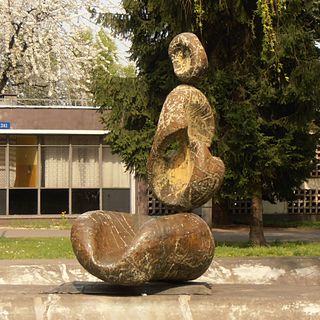
Jagusia, "Mobile Jagusia" – a fountain belonging to the entire set of outdoor sculptures, located in Wrocław in front of the Hutmen S.A. plant at 241 Grabiszyńska Street. The composition of the building consists of a swimming pool, within which a figure made of copper was placed. The figure consists of three parts rotating relative to each other. The shape of the figure refers to the female body. The view is expressed that the combination of elements of light and water with a moving sculpture used by the artist in this work is characterized by considerable effectiveness. The author of the sculpture is Tadeusz Teller. The unveiling of the work took place in 1974.
96. Park Strachowicki
Park Strachowicki in Wrocław - is a park located in the western part of Wrocław, at the Strachowice estate. The Wrocław-Strachowice airport is located nearby. The current name of the park applies on the basis of § 1 point 19 of the resolution No. LXXI/454/93 of the Wrocław City Council of October 9, 1993 on the names of parks and forest areas existing in Wrocław. The Strachowicki Park is held by the City Green Park subordinate to the Architecture and Development of the Municipal Office of Wrocław.
97. Muzeum Militariów
The Military Museum in Wrocław is one of the seven branches of the City Museum of Wrocław. Together with the Archaeological Museum, it is located in the complex of buildings of the medieval Municipal Arsenal, also known as the Mikołajski Arsenal, located at 9 Cieszyńskiego Street. The museum occupies two wings of the Arsenal, and the exhibitions stretch over 3 floors.
98. Karol Linneusz
Monument to Carl Linnaeus in Wrocław – a monument commemorating the person of Carl Linnaeus. Its author was Albert Rachner. It was built in 1871 and unveiled on 23 May 1871. The founder of the monument in 1870 was Moritz Wesel. The monument has the form of a realistic and detailed bust placed on a pedestal – a high pedestal with classicist forms. In relation to this type of monuments, the term "portrait monument" is used.
99. Wzgórze Maślickie
Maślickie Hill – an artificial hill with a height of 157.4 m above sea level, located in the Maślice housing estate in Wrocław. It is a rehabilitated landfill operating from the 60s of the twentieth century to the year 2000. It covers an area of 14 ha. The amount of garbage is 2.33 million cubic meters. It is the highest terrain point in Wrocław.
100. Games & Computers of the Past Era
The Museum of Games and Computers of the Past Era – a museum in Wrocław devoted to the history of games, consoles and computers, as well as retroinformatics. It was opened on September 2, 2017 in the building of the Świebodzki Railway Station. Created by members of the RetroGralnia initiative with the participation of crowdfunding funds. The Museum is a continuation of the previous activities of the initiative existing since 2011, which included, among others, the organization of numerous exhibitions, including in 2017 under the brand of the Museum to be established.
Wikipedia: Muzeum Gry i Komputery Minionej Ery (PL), Website
Share
How likely are you to recommend us?
Disclaimer Please be aware of your surroundings and do not enter private property. We are not liable for any damages that occur during the tours.
